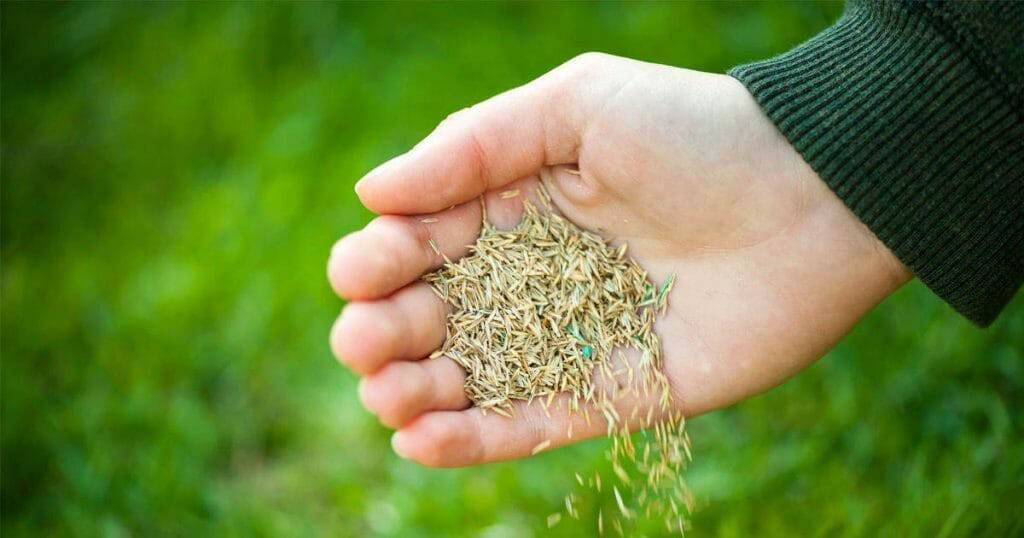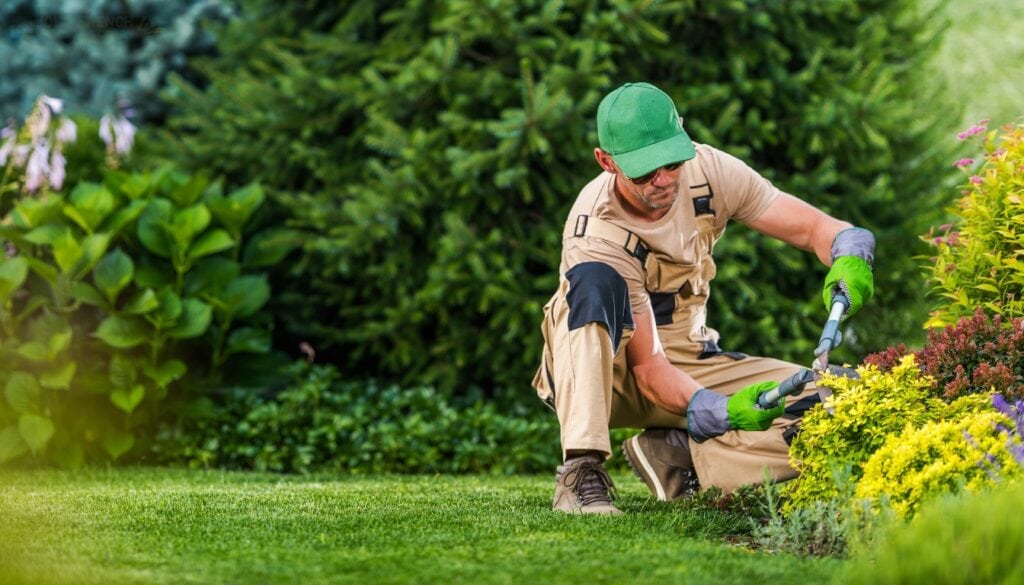Written by Amanda Prischak and published on https://www.familyhandyman.com/.
Few things beat the feeling of cool grass underneath our bare feet. When it comes to starting a lawn from scratch, though, the best time to plant grass seeds in late summer to early fall – mid-August to early October.
In this issue, the landscaping experts with Landscaping will talk more about the process of planting grass seed, how to select the right type and how long it will take for your grass seeds to grow.
When Is the Best Time to Plant Grass?

Knowing the best time to plant grass matters. Here’s how to do it right.
Whether you’re reseeding an entire lawn or just filling in a bare patch, planting any amount of grass is an investment of time and money. Make yours pay off by following this advice on the best time to plant grass and care for newly-planted grass seed.
Why It Matters When to Plant Grass
Different varieties of grass grow better during different times of the year. By choosing the best time to plant grass for your particular variety, you’ll increase your chances of growing a full and healthy lawn. Your goal should be to plant grass when it would naturally grow.
The Best Time to Plant Grass
There are two main varieties of grass seed: cool-season and warm-season.
Choose cool-season grass such as Kentucky bluegrass or tall fescue if you live in a cooler area of the country like the North, Midwest and Pacific Northwest. Because it can’t tolerate extreme heat or cold, the best time to plant cool-season grass is in the spring or fall.
Choose warm-season grass such as bermudagrass or bahiagrass, if you live in a hot Southern region. These grasses are best planted in the early summer because they will only germinate in warm soil.
Tips for Planting Grass
- Consider testing your soil first. Grass grows best in soil with a pH between six and seven, so consider doing a soil test to see if you need to amend your soil.
- Prepare the surface. Remove any rocks and debris, then use a garden rake to even out the surface. You can then add a bit of fresh soil to improve the soil quality.
- Apply fertilizer. You can do this before or after you seed the lawn. A broadcast spreader is the most efficient way to distribute granular fertilizer over a large area.
- Apply the correct amount of grass seed. Applying too much creates too much competition for light, water and other resources. Applying too little will leave your lawn looking sparse. Always follow the manufacturer’s recommendations or the advice of the garden store staff.
- Only apply 1/4-in. of soil on top of the seeds. That’s all that’s needed to keep the seeds from drying up or washing away.
Tips for Treating Newly Planted Seed
- Keep birds at bay. Glen DellaValle, CEO of DellaValle Management, Inc., a Lexington, Ky. based property management company that cares for more than 150 acres of private lawns, creates reflective mobiles to ward off seed-loving birds. “String together a half-dozen aluminum pie pans, then tie them between low stakes in the lawn,” he advises.
- Water properly. The top inch of soil in a newly-seeded lawn should be moist but not drenched. Once the grass sprouts, keep the top two inches of soil moist until the blades reach three inches.“Again, aluminum pie pans can help,” says DellaValle. “Place a few on the lawn, and each day at the same time, mark the water level with a Sharpie. You’ll know how much water your lawn is getting from a combination of rain or dew and can adjust accordingly.”
- Be patient. Depending on the variety of grass seed you use, it can take as little as five to as long as 30 days for the grass to germinate.
- Cut carefully. The new grass will not be well-established with deep roots for about eight weeks, so mow your lawn carefully the first few times. The grass should be at least three inches tall before the first mow. Sharpen your mower blade for clean cuts. Remove no more one-third of the leaf tissue when you mow to avoid stressing and weakening the grass.
- Keep watering. Once the grass reaches three inches tall, continue to water the lawn every two or three days. Less frequent but intense watering sessions promote deeper root growth, so keep the top four inches of soil wet.
Original post here https://www.familyhandyman.com/article/when-to-plant-grass/.



